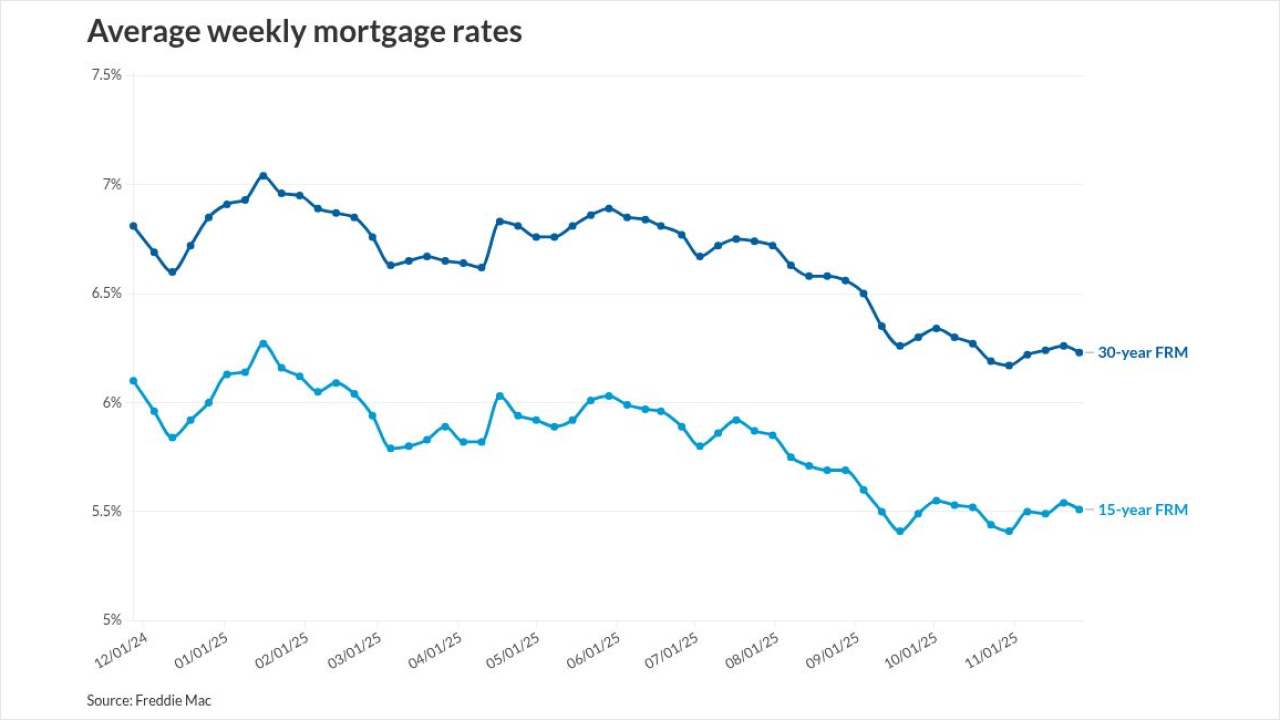The latest mortgage interest rate drop didn't change refinancing incentives in the conventional securitized market, but a subsequent decline could, a new FHN Financial report shows.
Primary mortgage rates' dropped roughly 20 basis points in the past month to
A few different buckets that each account for $200 billion to $300 billion dollars of outstanding loans originated in the past few years could be exposed if rates drop that much again.
"The last 20 basis points really only affected small coupon buckets. The next 20 or 30 will affect very large coupon buckets," Walt Schmidt, senior vice president, mortgage strategies, at FHN Financial said in an interview.
The report examines the baseline turnover that occurs for outstanding mortgages due to that occurs without an incentive such as a move to a new home, and a drop of 50 basis points or more, which has an increased likelihood of generating refinancing into lower rates.
"Turnover at zero is usually cash out, or people moving. Once you get into plus 25, to plus 50 of incentive, most of it then becomes a more typical refinance," he said.
Activity has risen even though refi incentives have limits
The biggest buckets of securitized loans, which date back to the pandemic, still are a long way from having much of an incentive to refi and the largest of which is more than $700 in size, according to FHN Financial's study of conventional loans.
Rates would have to be roughly halved before 2020-2021 loans would have refi incentives, that report shows.
However, refinancing activity was the strongest seen in a few years for a second quarter, according to Polygon Research's analysis of rate-and-term MBS data.
Based on dollar volume, the $31.75 billion seen this year was the largest for any second quarter for at least the last four years. The loan count of 84,693 was the highest seen since the second quarter of 2022. Dollar volume and loan count were higher in some intervening quarters.
Fannie Mae's recent Refinance-Level Application Index, which is due for its next update on Tuesday, showed activity during the week ending Aug. 15 based on dollar volume was up 28.6% over the same period a year earlier. The count was 21.5% higher during that time span.
Around 4.6 million home purchase loans originated between 2022 and 2024 have rates of 6.5%-plus and could be refinanceable, according to a Polygon Research analysis of Home Mortgage Disclosure Act data.
The Fed and what might be next for mortgage rates
Federal Reserve Chairman Jerome Powell did recently give a speech that
But what that means for longer-term mortgages remains to be seen.
"Historical patterns show mixed results. After the Fed's 2024 cuts, mortgage rates initially dipped but later rebounded due to yield volatility," Buresch noted.
The Polygon Research CEO said she anticipates a drop in mortgage rates into the 6% range if economic indicators show weakness and point to other cuts beyond September, but any signs of inflation could slow the decrease.





